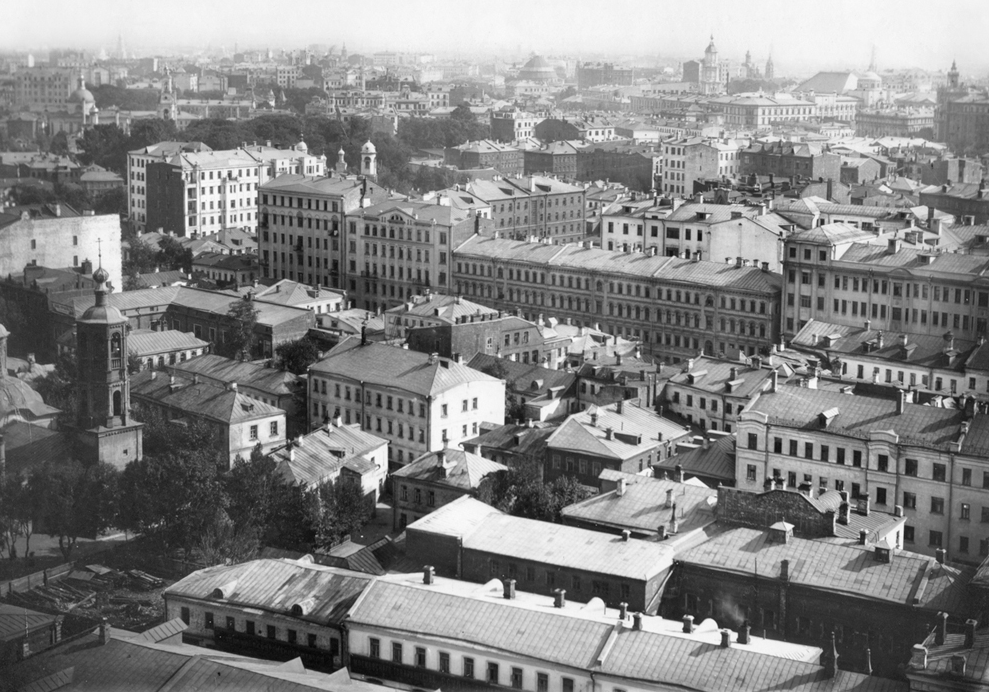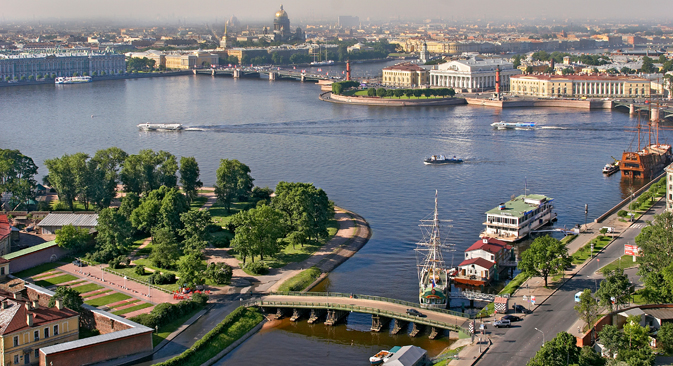Moscow’s forgotten Indian connections

Moscow in 1914.
Public domainThose familiar with Moscow’s cultural scene would have at least heard of the prestigious Pushkin Drama Theatre, which is located on Tverskoy Boulevard in the heart of the Russian capital. It is one of the leading theatre companies in Moscow, staging both traditional and contemporary plays.
While doing some research on Moscow’s city center, I was to find out that this theatre has a deep-rooted connection with India. In 1914, the theatre, then called the Chamber Theatre opened its doors to the public after winning a hard-fought battle with the Russian Orthodox Church. Next door to the theatre is the 17th century Church of St. John the Evangelist. The Russian clergy, already opposed to an entertainment venue being built adjacent to the church, were further shocked to find out what the first ballet to be staged in the theatre was in someway connected to an “Eastern” religion.
The theatre’s first production was Kalidasa’s Shakuntala, the story of the daughter of the sage Vishwamitra from the Mahabharata. The music for the ballet was composed by the legendary musician Hazrat Inayat Khan, who was the founder of the Sufi order in Europe. Khan lived in Russia until the outbreak of the First World War.
Shakuntala by Hazrat Inayat Khan (1993). Source: Sergey Moskalev/YouTube
Muscovites got a taste of India’s age-old tradition of cultural pluralism, with a Muslim musician composing the music for a story from a Hindu epic.
“The performance was the talk of the town and the theatre became an instant success after the premiere,” says Ivan Griko, a historian who is writing a book on Inayat Khan and his Moscow-born daughter Noor Inayat Khan (one of the great spies for the Allies in World War II). “By this time, Nicholas Roerich was already famous among the intelligentsia, and there was a strong interest in the mystical and fairy tale land of India,” he adds.
Scholar of Hinduism and Buddhism
Griko says interest in India peaked in the late 19th century in Moscow and St. Petersburg but most academicians and intellectuals had to rely on the works of Europeans such as Max Mueller, although Leo Tolstoy referred to Hindu texts in his works.
One of the first Russians to attempt translations of Sanskrit and Pali texts was Pavel Boulange, a writer and translator, who was a follower of Tolstoy.
In 1911, he wrote ‘The Life and Times of Siddharta Gautam Buddha,’ based on translations from Pali texts. Boulange was also a publisher and was entrusted with the task of publishing a Russian version of Max Mueller’s ‘Sacred Books of the East.’ This edition was supposed to include the Vedas and Upanishads.
Boulange “expressed dissatisfaction with Max Mueller’s rendering of the Vedas,” Ganga Ram Garg wrote in his book ‘World Perspectives on Swami Dayananda Saraswati.’
“What struck me in Max Mueller’s translation was a lot of absurdities, obscene passages and a lot of what is not lucid…,” Boulange is quoted as saying in Garg’s book. “As far as I can grasp the teaching of the Vedas, it is so sublime that I would look upon it as a crime on my part if the Russian public became acquainted with it through the medium of a confused and distorted translation, thus not deriving for its soul that benefit which this teaching should give to the people.”
The Bolshevik Revolution came in the way of Boulange personally writing about the great Hindu texts. “The communists were suspicious of his religious leanings and what he would publish,” says Griko.
Yoga in Stanislavsky’s studio
Russian theatre director Konstantin Stanislavsky was passionate about yoga and taught his students the Indian physical, mental and spiritual disciplines.
Stanislavsky’s system, which also called for artists to practice yoga, influenced modern drama theatre around the world.
In this gem of an article, my old friend Konstantin Fets wrote that Stanislavksy used pranayama exercises to develop actors’ creative well-being, including a count for inhaling-exhaling and holding the breath.
“Stanislavsky’s preoccupation with yoga only rose in the years immediately following the 1917 Revolution, when he studied the connections between actors’ psychological and motor and physical conditions,” according to Fets.
Almost a hundred years later, yoga seems to be Moscow’s biggest connection with India. The Russian capital has 268 yoga studios, and more than 3000 people turned up at the Sokolniki Park last year on International Yoga Day.
“Despite being clearly Euro-centric, many Russian intellectuals and artists in the early 20th considered India the cradle of civilization,” says Griko, who is also looking to unearth more proof of turn the century Moscow’s fascination with India, by going through an endless list of archives.
Tailpiece
All it takes is ten minutes with an Indologist in Russia to really understand how deep the connections between our two countries actually are. A misguided perception is India is that the great political and personal ties between the countries are the result of Cold War geopolitics.
All rights reserved by Rossiyskaya Gazeta.
Subscribe
to our newsletter!
Get the week's best stories straight to your inbox
